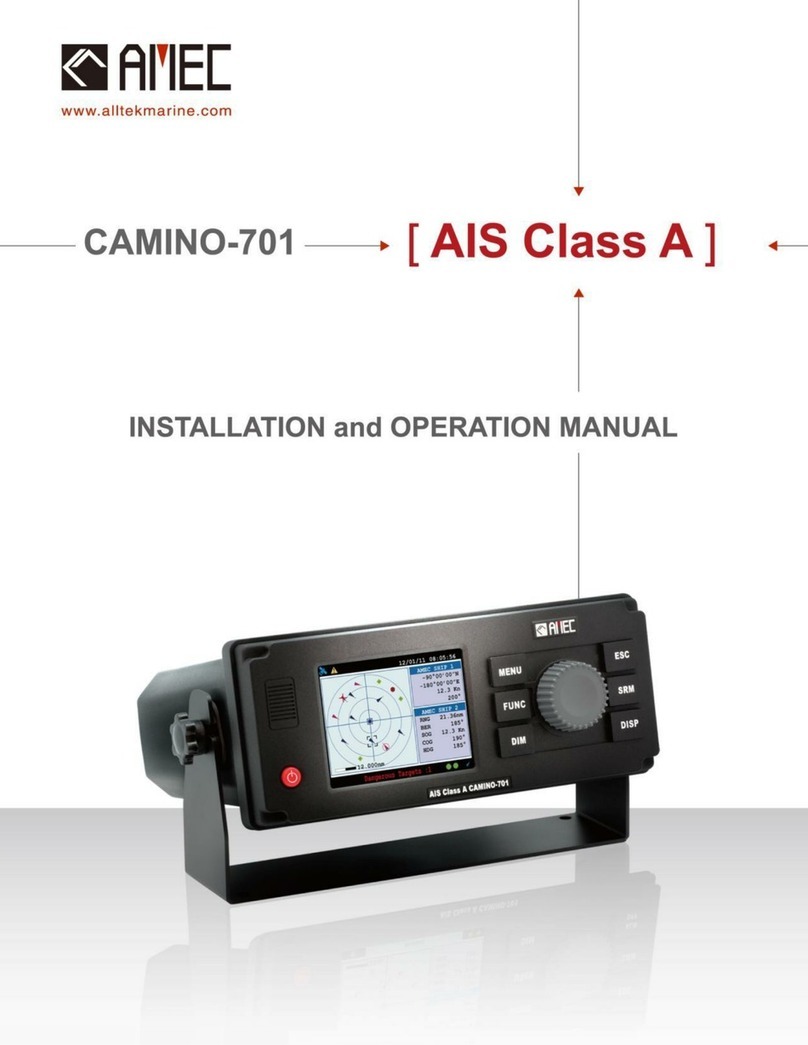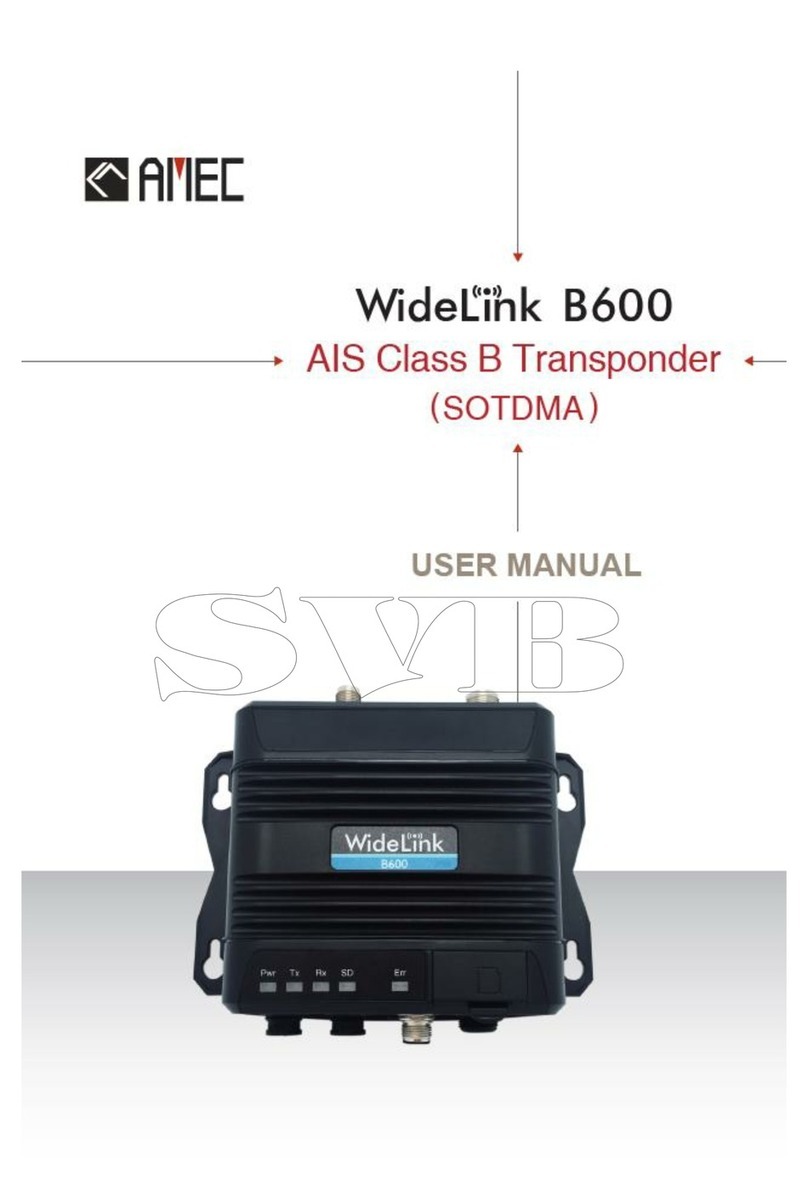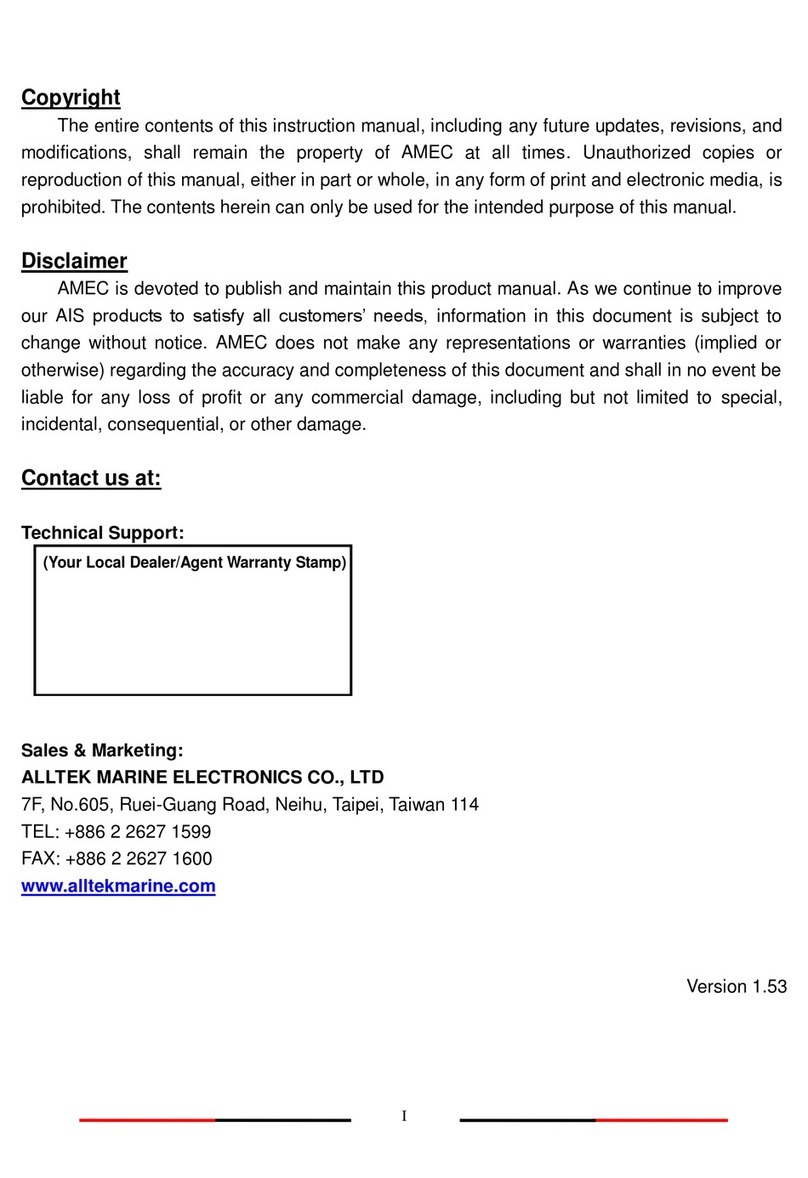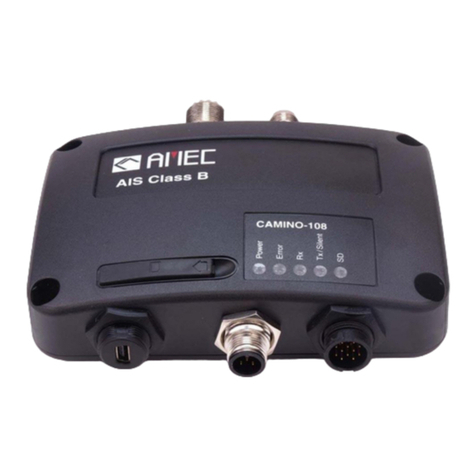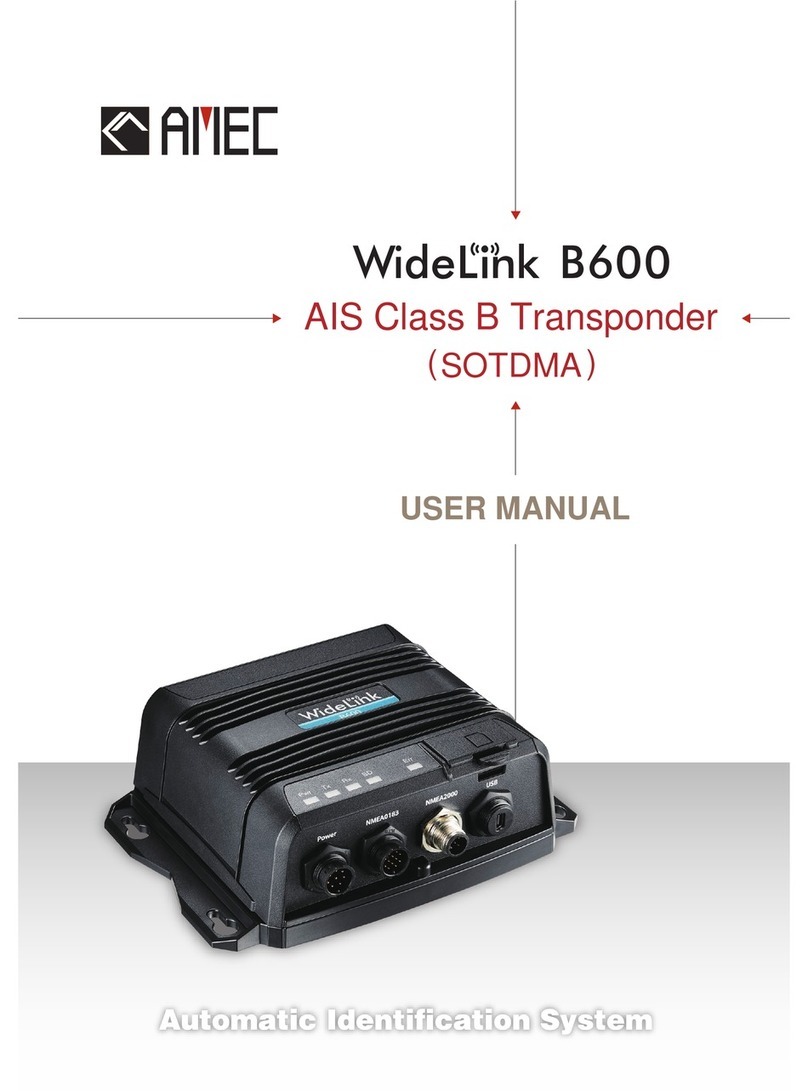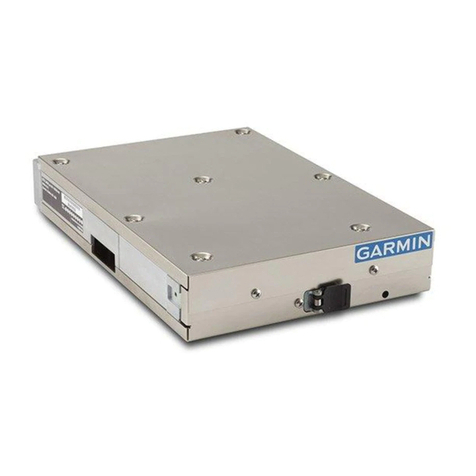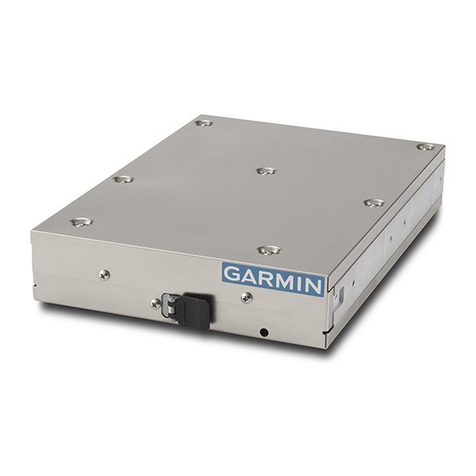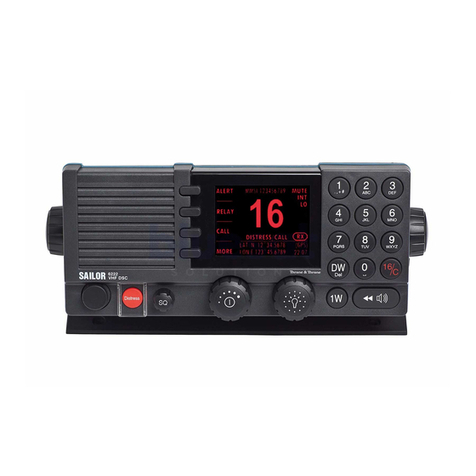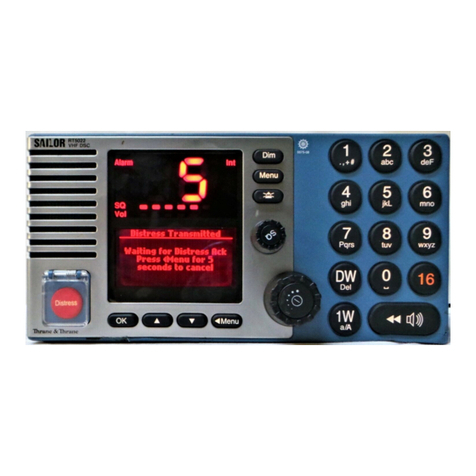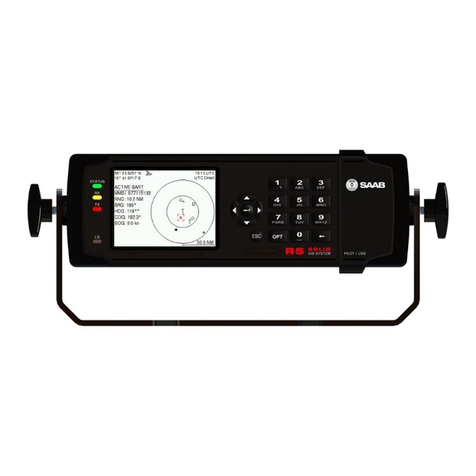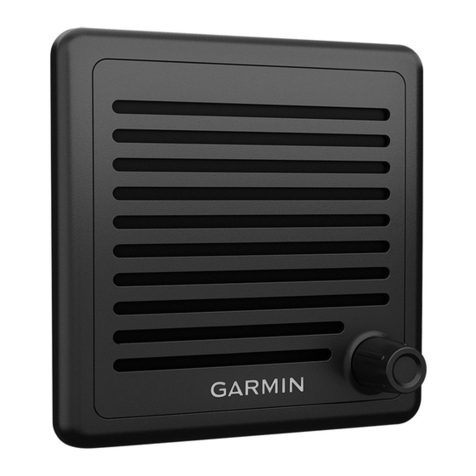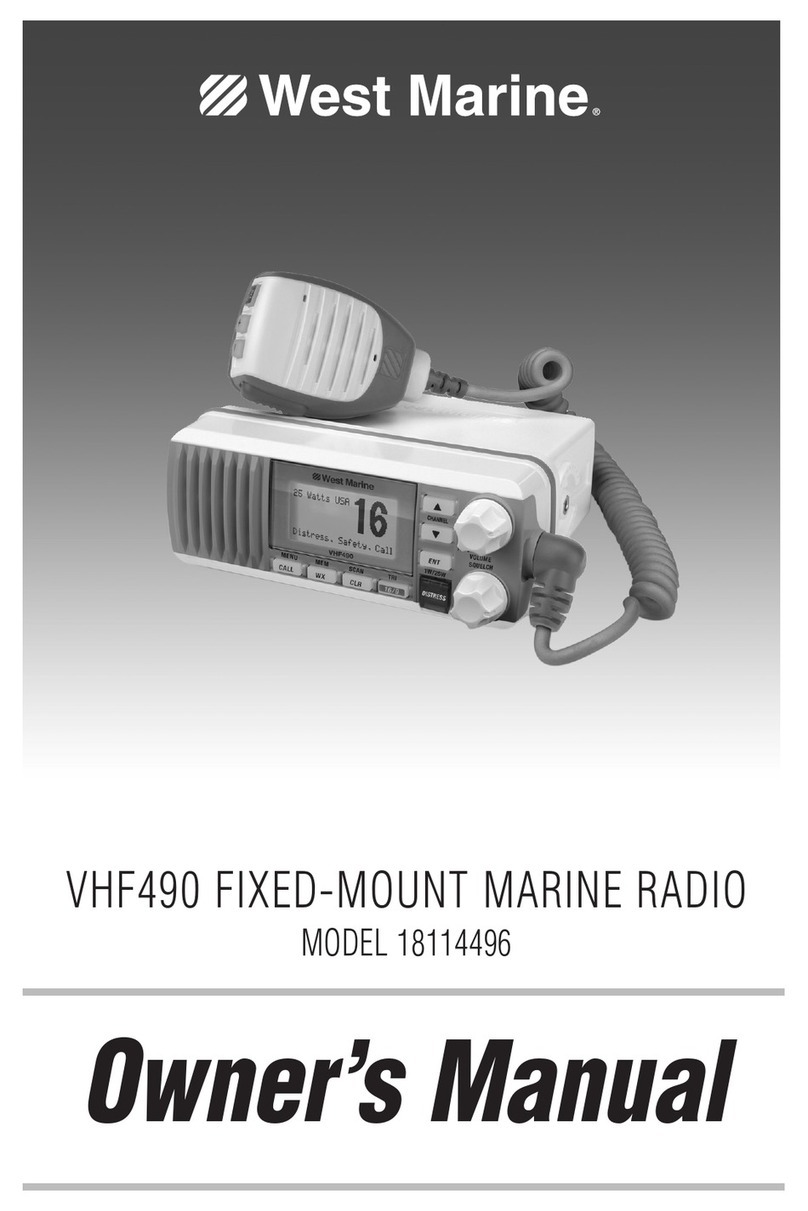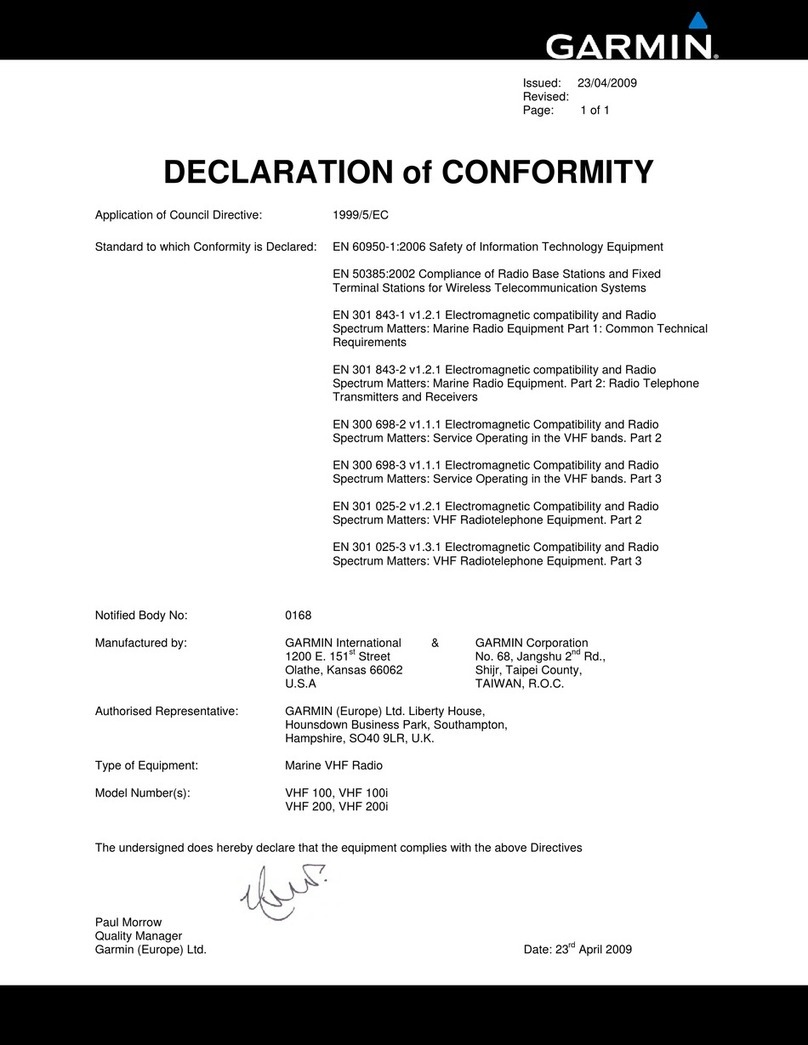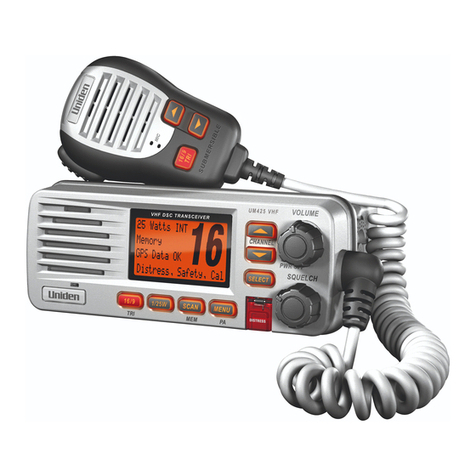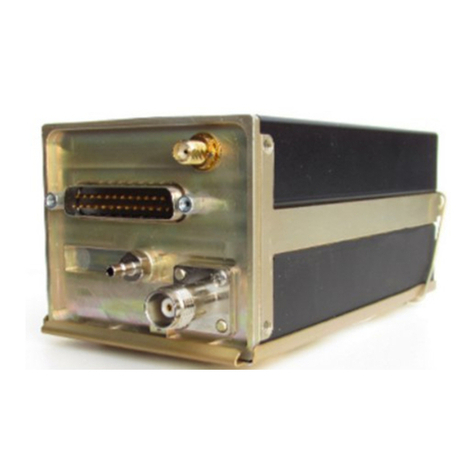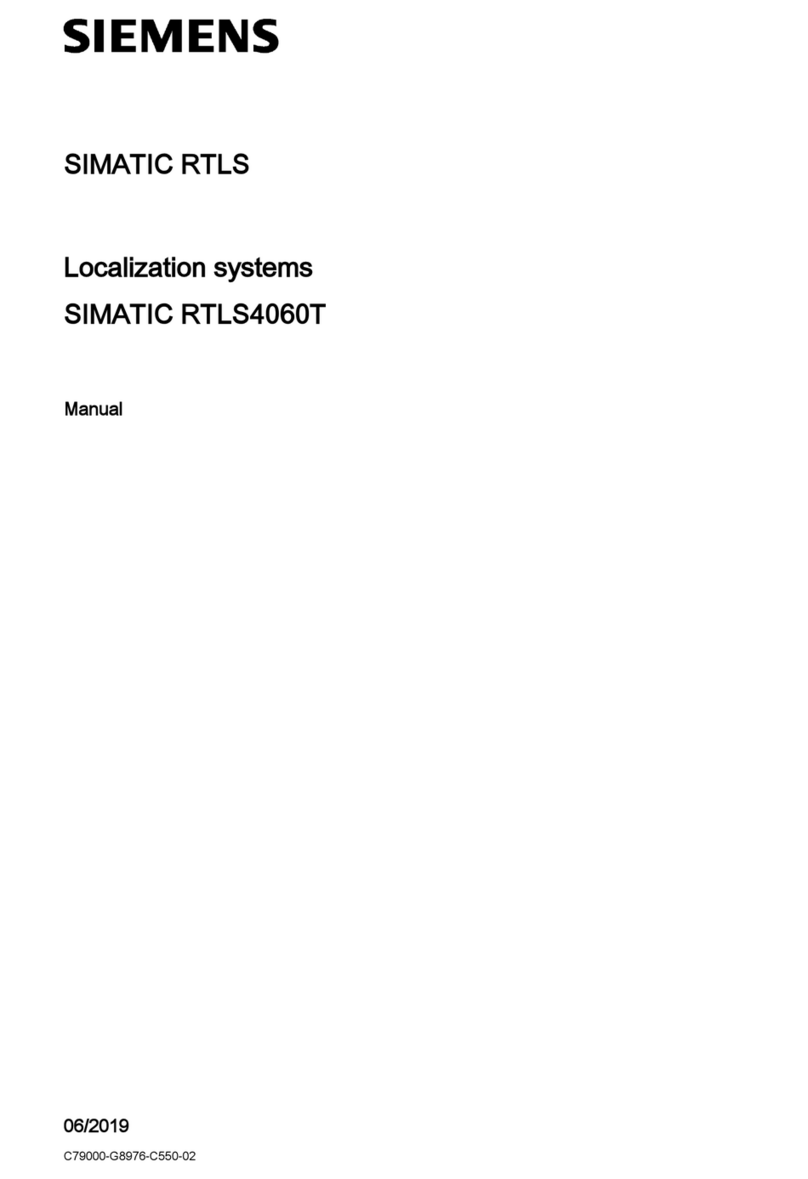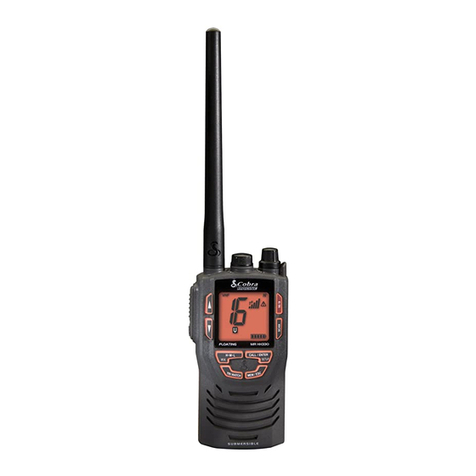Table of Contents
I. COPY RIGHT & DISCLAIMER
II. WARNING & SAFETY INSTRUCTION
III. FORWARD
Pages
1 INTRODUCTION ..................................................................................................................................1
1.1 CAMINO-101 Overview..............................................................................................................1
1.2 Type of AIS...................................................................................................................................2
1.3 AIS Message Type......................................................................................................................2
1.4 AIS Report Rate ..........................................................................................................................3
1.5 About this Manual......................................................................................................................3
1.6 Important Notice.........................................................................................................................3
2 INSTALLATION ....................................................................................................................................4
2.1 General..........................................................................................................................................4
2.1.1 Safety Instructions .........................................................................................................4
2.1.2 Unpacking and Handling the Unit...............................................................................5
2.1.3 Items in the Package......................................................................................................5
2.2 Installation Procedure...............................................................................................................6
2.2.1 Installation Precautions ................................................................................................6
2.2.2 Step by Step Installation Instructions.......................................................................7
2.2.3 Connector Pin Definition and Wiring.......................................................................10
2.2.4 VHF Antenna Installation............................................................................................13
2.2.5 GPS Antennas Installation .........................................................................................14
2.2.6 Antenna Cabling............................................................................................................14
2.2.7 CAMINO-101 External Connections.........................................................................15
2.2.8 AMEC AIS Configuration Software Installation.....................................................16
2.3 AMEC AIS Viewer Software Installation .............................................................................20
2.4 Bluetooth Pairing (Optional Feature)..................................................................................23
3 GET STARTED...................................................................................................................................24
3.1 Turning Power ON / OFF........................................................................................................24
3.2 Front Panel LED Indicators ...................................................................................................25
3.2.1 Built-in Integrity Test (BIIT)........................................................................................26
3.3 CAMINO-101 Configuration Settings..................................................................................27



